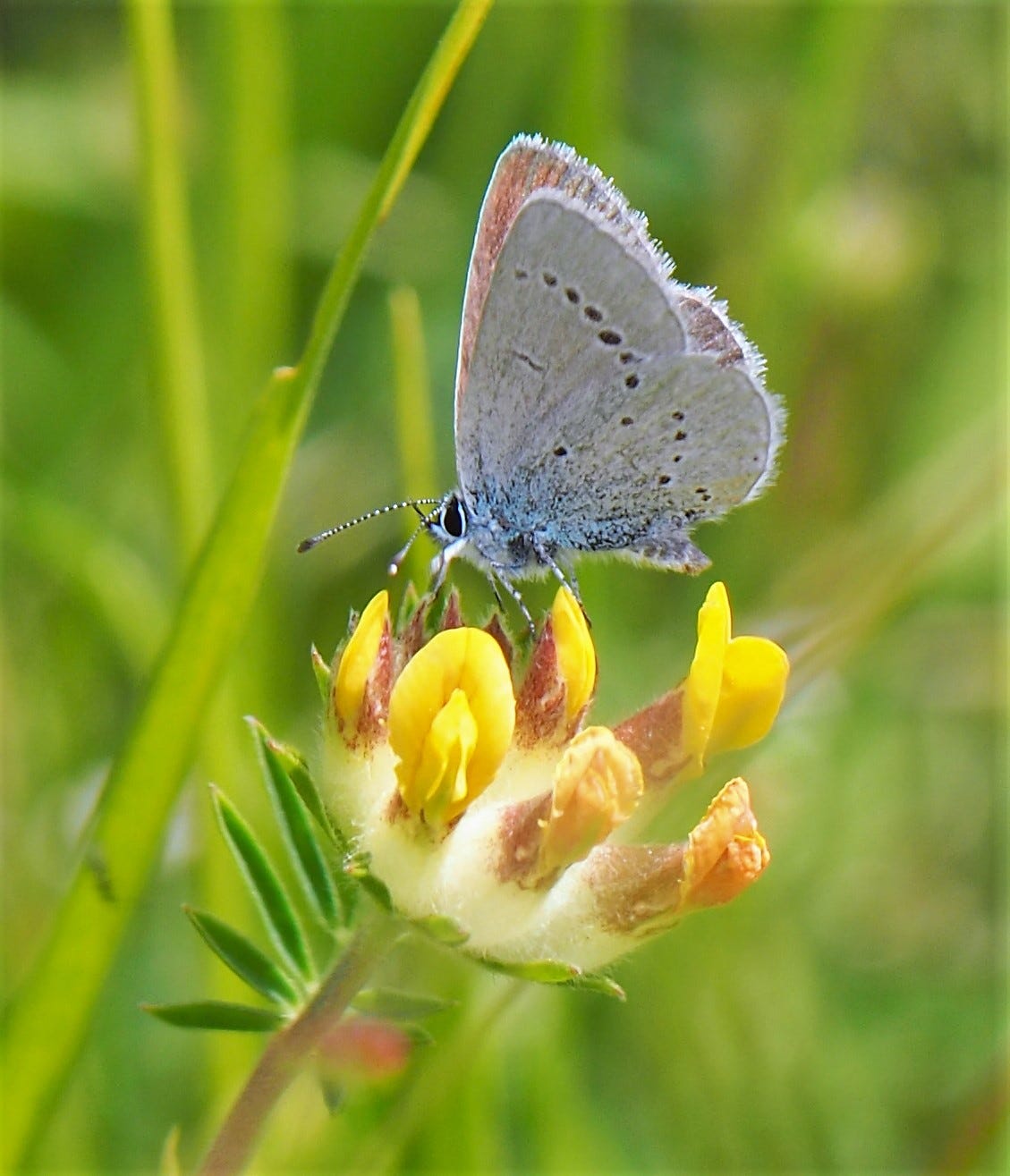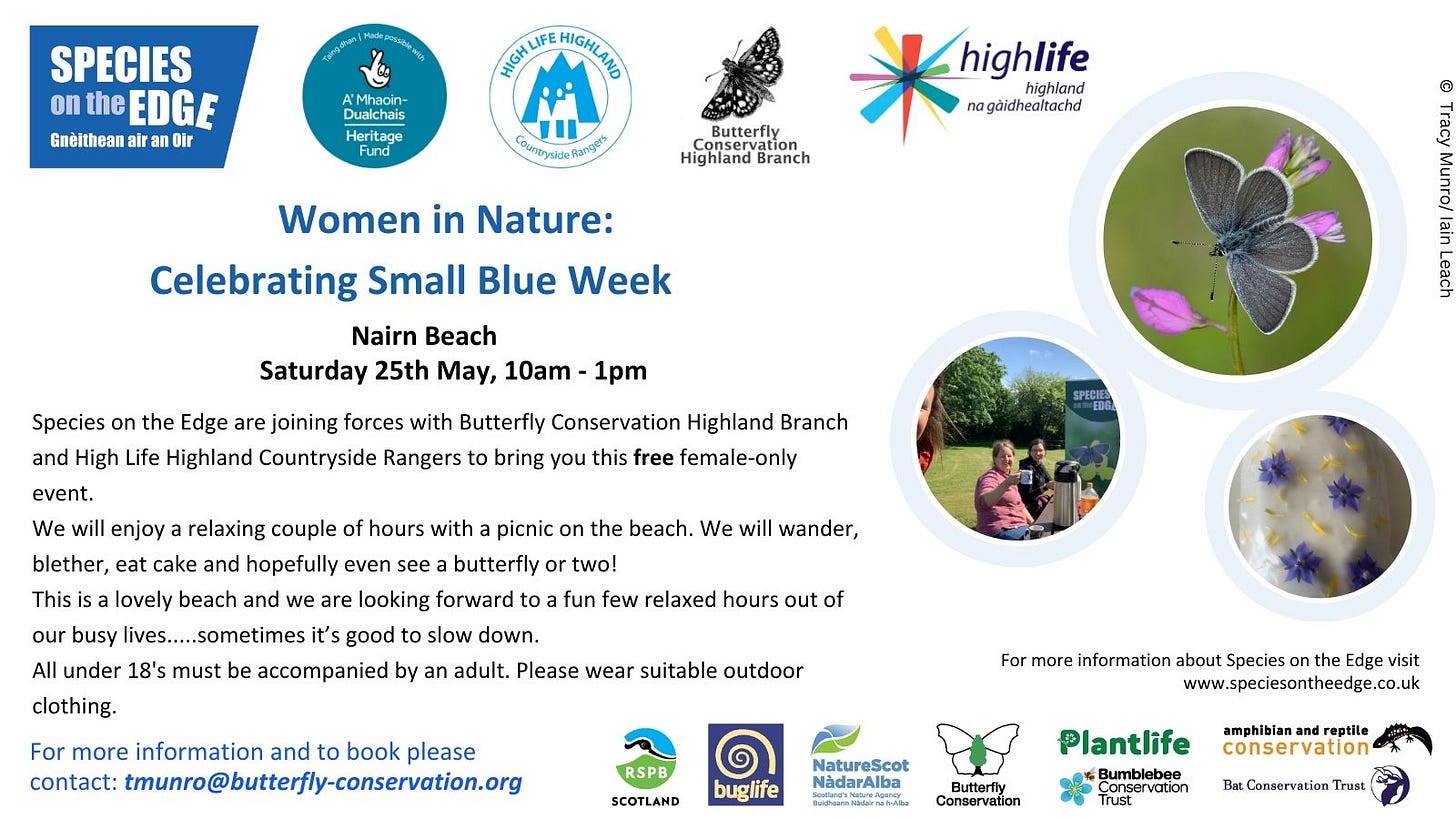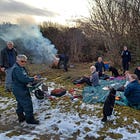Small, blue and mighty
John urges us to celebrate these wee butterflies who are living on the edge in Highland
Summer is arriving at the end of May and we will soon be past the risks of frosts - butterflies can already be seen all around us on warm, sunny days (you’ll have noticed this if you took up the no mow may challenge - as flowers start to bloom on the lawn).
Butterflies are some of our most colourful animals with amazing lifecycles too. Even this far north in the Highlands they can survive and thrive in the countryside, gardens and parks. Despite being exotherms (getting their body heat from an external source) butterflies like Mountain Ringlet can be found on top of our highest mountains.
There has been a dramatic change in butterfly distributions across Scotland in recent decades which may be linked to the effects of climate change. The most mobile, generalist species like Comma and Peacock butterflies have been able to expand rapidly into the Highlands, 20 years ago these species would have been rarely seen here. However, while some species are increasing their range others are struggling to survive.

The High Life Highland Ranger Service have been involved in an important conservation project ‘Species on the Edge’ with the Butterfly Conservation Trust - giving one of our rarest butterflies the Small Blue a helping hand. This butterfly’s Latin name is Cupido minimus. As the name suggests, it’s the UK’s smallest butterfly -about the size of a 20p piece. Found in small populations along the coast such as Fort George and Ardersier Common, and the area around Castlehill in Dunnet further north still, it has become scarce due to a loss of suitable habitat and plant species. The Small Blue’s caterpillar is a very fussy eating only one plant ‘Kidney Vetch’, which grows among coastal shingle and sand dunes.
Volunteers from local communities to the small blue have been instrumental in assisting the High Life Highland Ranger Service and Butterfly Conservation's ‘Species on the Edge’ officers in supporting rare butterfly populations. By cultivating kidney vetch seeds and planting them in upper shore areas and dune landscapes where these plants and butterflies were previously absent, volunteers have facilitated the re-establishment of these butterflies, where they can now be observed in late May and June. Additionally, extensive habitats consisting of kidney vetch and bird’s foot trefoil have been created along the shore path at Ardersier and on butterfly banks at Dunnet. While kidney vetch supports the small blue butterflies, bird’s foot trefoil serves as an excellent nectar source for dingy skippers, another rare butterfly species.
Now Species on the Edge have partnered with High Life Rangers again to run a series of events celebrating some of the success over the last few years, and to admire and count the small blue and other butterflies.
Firstly this weekend in Caithness:
Followed by the Small Blue Week
25th May - 1st June 2024
A week of activities celebrating the UK’s smallest butterfly!
Come and join one of our many activities and learn about the small blue butterfly.
Dates for your dairy:
Sat 25th: Women in Nature, Butterfly Picnic - Nairn Beach
Mon 27th: Small Blue training day - Ballchraggen Wood, nr Tain
Tues 28th: Wildflower Walk - Dunnet Forest
Wed 29th: Painting & Photography Workshop - Dornoch Beach
Thur 30th: Butterfly Bike Ride (with moths!) - Culloden
Grande Finale Sat 1st June:
Choose from 4 Butterfly Walks at:
Loch Fleet
Ardersier Common
Portknockie
Forvie NNR
For further information, contact Tracy Munro: tmunro@butterfly-conservation.org
Women in Nature at Nairn Beach
Come along and join us and the SotE and celebrate your nearest Small Blue event for Small Blue Week!
You can help other butterflies locally to where you live by creating a meadow patch in your garden or community to benefit all kinds of nectar feeding insects, not just butterflies, why not then add this to the highlands Meadow Map: https://www.highlandenvironmentforum.info/meadows-map/.
Always refer to guidance if considering translocations. Many conservation translocations are low-risk. However, some have the potential for negative impacts on the environment and other land-uses. The Ranger service will be able to assist with advice and guidance.
John Orr is the High Life Highland Countryside Ranger for Inverness. Throughout his career spanning 30 years, John has demonstrated a deep commitment to environmental stewardship and education. His work has not only contributed to the preservation of Scotland's natural heritage but has also inspired many individuals to engage with and appreciate the natural world around them. His work includes developing and implementing management plans for local habitats, leading educational programmes, and working collaboratively with local communities to raise awareness of our natural world.











